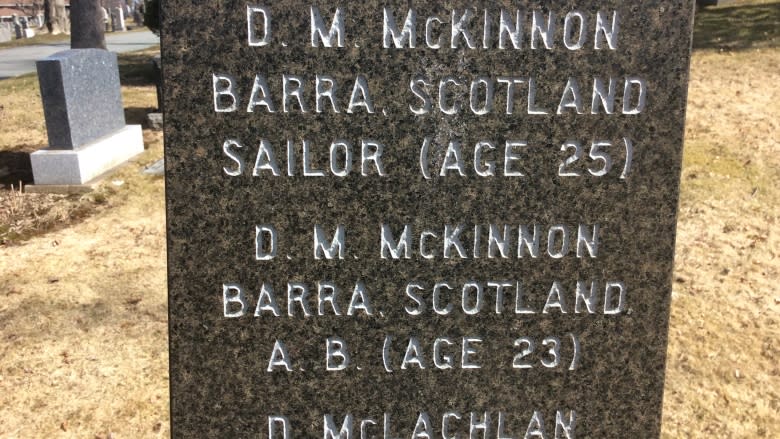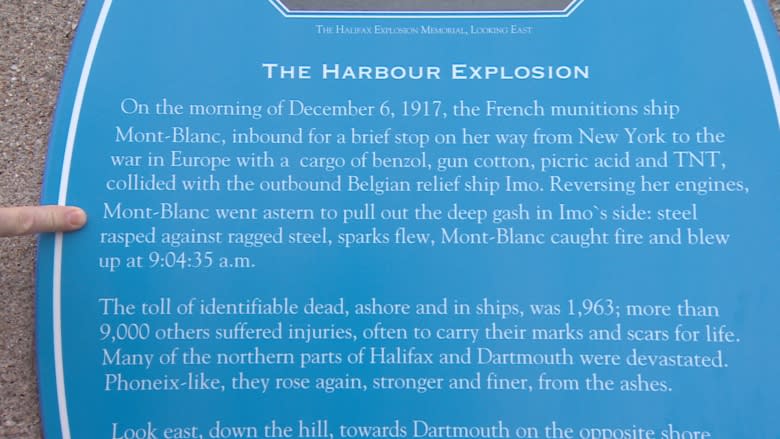Another Halifax Explosion memorial engraved with errors
A monument commemorating those who died aboard the ship that's said to have suffered the highest loss of life in the Halifax Explosion is full of mistakes.
Forty-six men perished aboard the SS Curaca, spelled Curacas in some records.
A monument to its officers, engineers and crew at Fairview Cemetery in Halifax lists names of the deceased and where they were from.
Unfortunately, a number of the names and places featured are flawed.
Mac versus Mc
John Zareski of Chezzetcook, N.S., became interested in Curaca's fate a couple of years ago during a visit to Barra, a small Scottish island where his fourth great-grandfather was born.
While there, owners at the bed and breakfast where he stayed told him about five young men from Barra who were among the crew who perished aboard Curaca.
When Zareski returned to Nova Scotia, he visited the monument at Fairview Cemetery to search for their names and found some of them misspelled.
They included two MacKinnons, a MacNeil and a MacLean, erroneously engraved as McLean, McNeil, and McKinnon on the monument.
The same names are misspelled in the Halifax Explosion Remembrance Book, a Nova Scotia Archives searchable electronic database.
According to Archives senior archivist Garry Shutlak, the use of the prefix "Mac" became popular in the 20th century. Before then, most Scottish names were spelled with the prefix "Mc."
The wrong Sydney
Zareski found more than a dozen other errors on the monument, mostly misspelled names of the members of Curaca's international crew.
For example, the engraved name George Ealderman from London, England should be George E. Alderman.
Zareski said he feels one of the most egregious errors on the monument is the identification of a crew member as being from Nova Scotia.
Engraved in stone is the name R.L. Pickering of Sydney, N.S. But Zareski says his research indicates Pickering was actually from Sydney, N.S.W. — New South Wales, Australia.
All but one dead
Curaca was docked in Halifax to load horses for the war effort the morning that the collision between the Belgian relief vessel Imo and Mont-Blanc, a French cargo ship loaded with explosive cargo, led to the largest man-made explosion in the world before the atomic bomb.
Curaca was the closest ship to where Mont-Blanc drifted after the collision.
Curaca's crew was on deck watching Mont-Blanc burn, unaware of the dangers she held, when the explosion occurred.
Only one man aboard the ship, who had ducked below deck to roll a cigarette, survived the blast.
The Curaca monument isn't the only Halifax Explosion memorial that bears a few gaffes.
In January, CBC found out about a 17-year-old error on a plaque in Fort Needham Memorial Park.
The plaque mistakenly says the Mont-Blanc struck the Imo, when it was the other way around.
This year marks 100 years since the Halifax Explosion.




